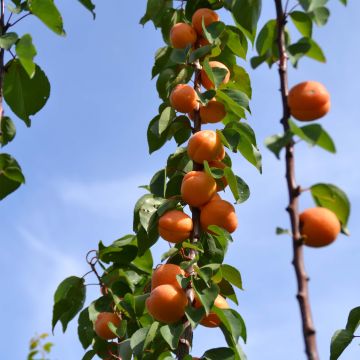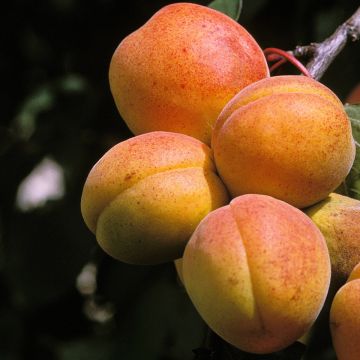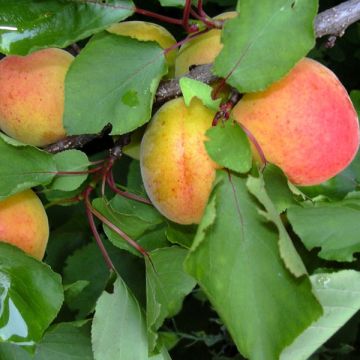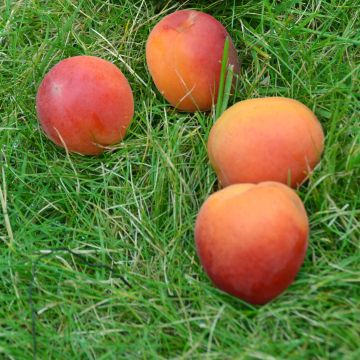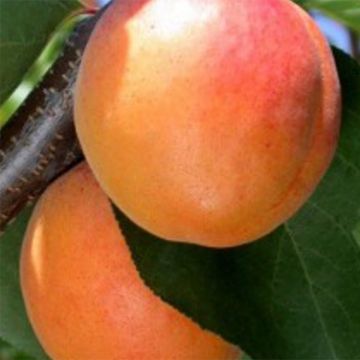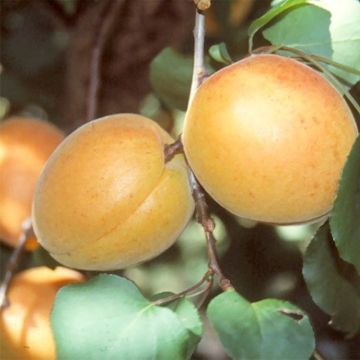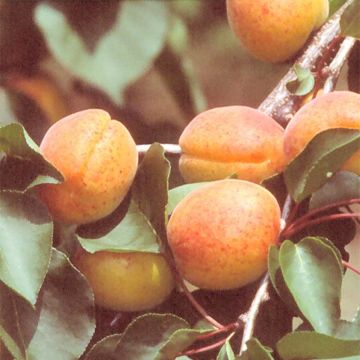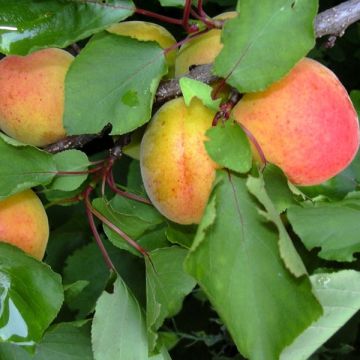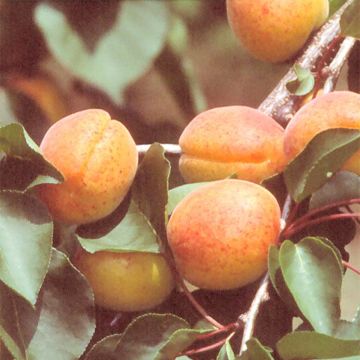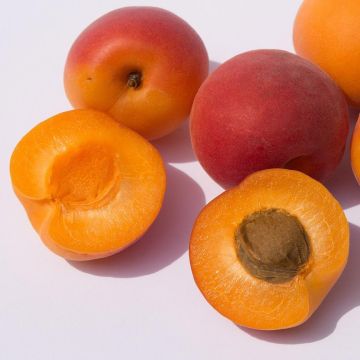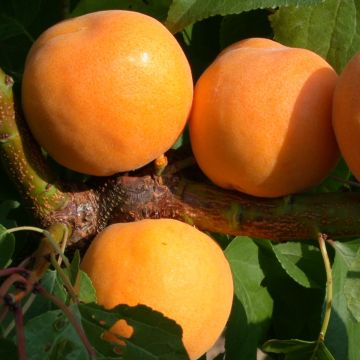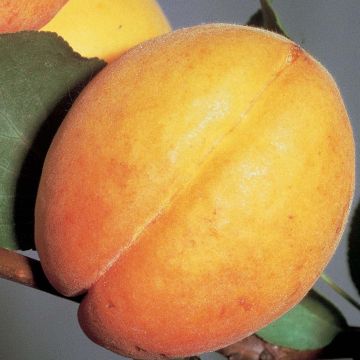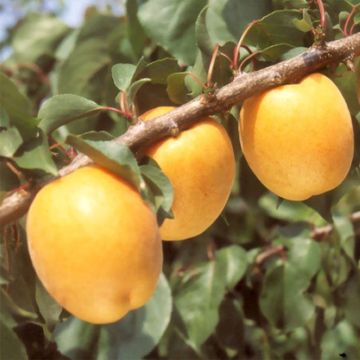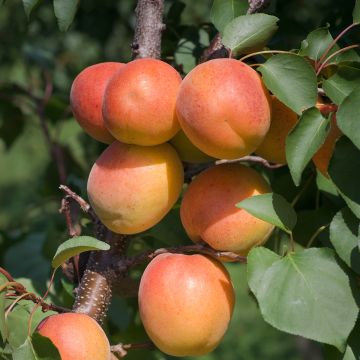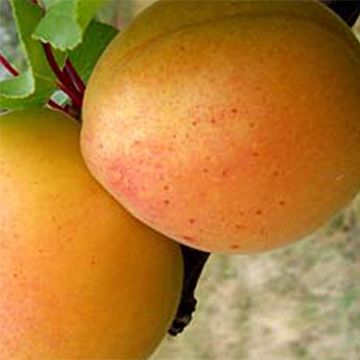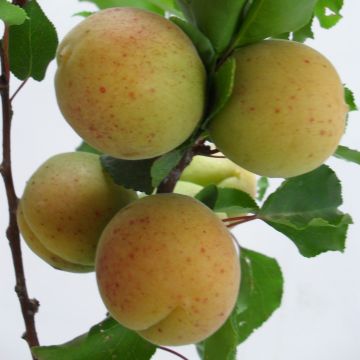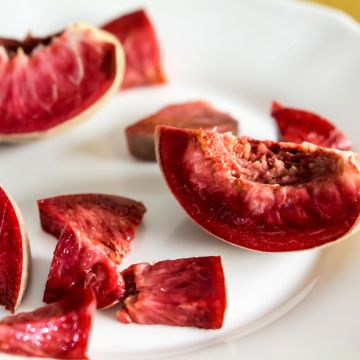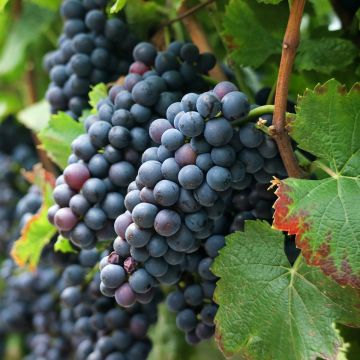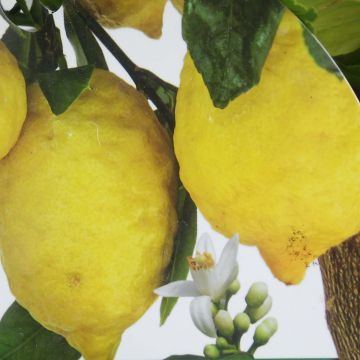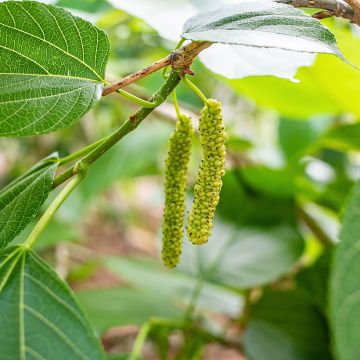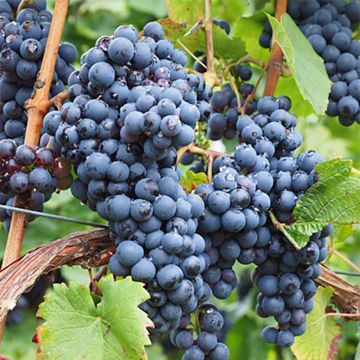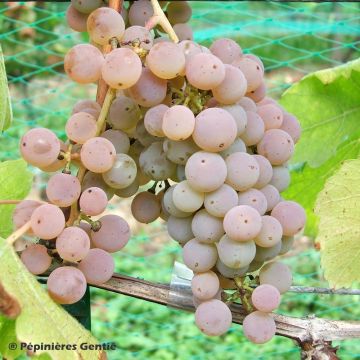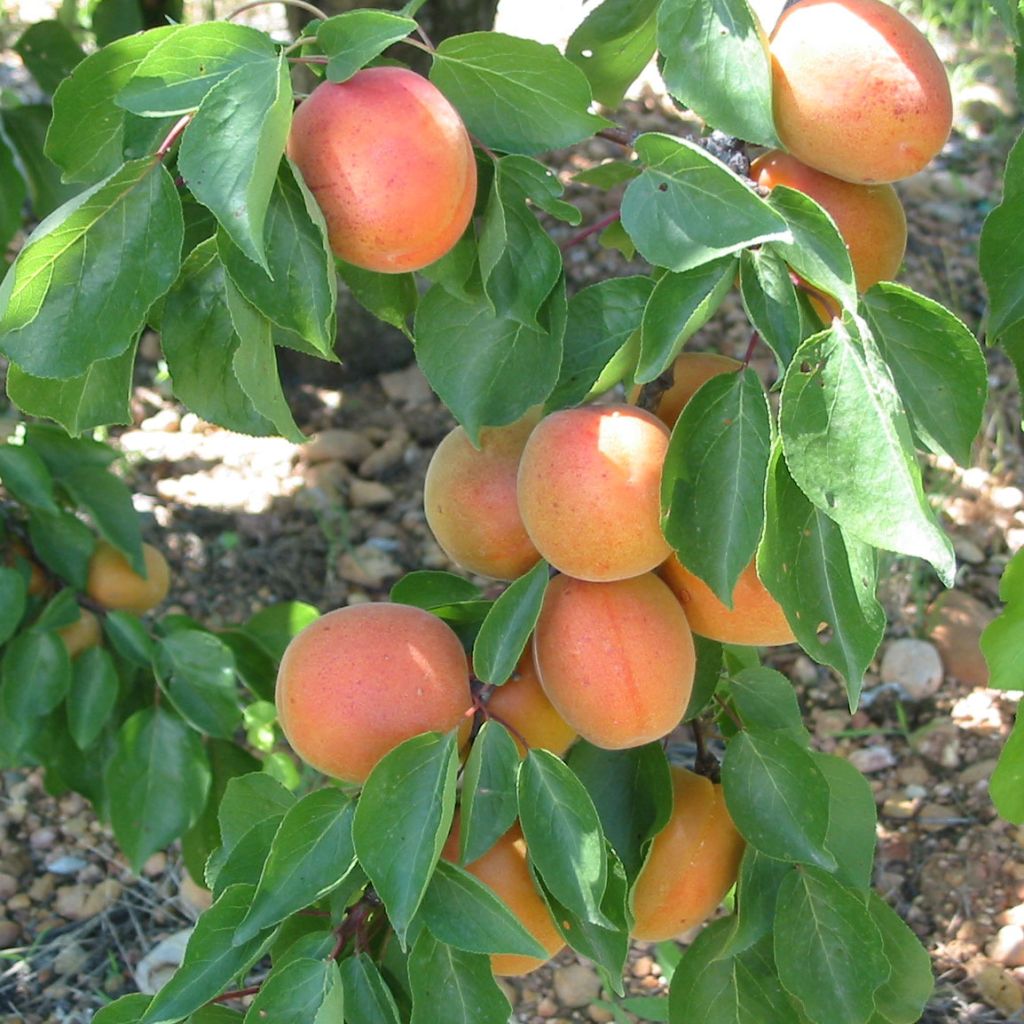

Abricotier Flavor Cot® - Prunus armeniaca
Prunus armeniaca Flavor Cot - Apricot Tree
Prunus armeniaca Flavor Cot®
Apricot
un peu jeune pour le prix , j'espère qu'il va vite grandir
marie therese C., 20/11/2016
Why not try an alternative variety in stock?
View all →This plant carries a 6 months recovery warranty
More information
We guarantee the quality of our plants for a full growing cycle, and will replace at our expense any plant that fails to recover under normal climatic and planting conditions.
Oversize package: home delivery by special carrier from €6.90 per order..
Express home delivery from €8.90.
Delivery to Corse prohibited: UE law prohibits the import of this plant from mainland France to Corse as part of the fight against Xylella fastidiosa. Please accept our sincere apologies.
More information
Description
Prunus armeniaca Flavorcot is a self-fertile and highly productive variety. This semi-late variety produces deep orange fruits, approximately 4cm (2in) in diameter. Their flesh is firm and tasty with a powerful aroma. Their taste is musky with a hint of pear. This variety delivers an early harvest, around June 20th. The fruits store well after harvest.
The apricot tree is native to Central and Eastern Asia. It has been cultivated in China for 3,000 years. Prunus armeniaca was introduced from Armenia (hence its name) at the beginning of the Christian era. In 1999, Tom Toyana patented the creation of Flavorcot, which he developed at the Washington State University Research Foundation in Prosser.
Its semi-late flowering protects it from late winter frosts, making it ideal for cool regions. It can withstand temperatures as low as -15°C (5°F). A sunny, south-facing position, sheltered from the wind, is necessary for fruiting.
This variety has a semi-erect habit, which means it has a slender trunk topped with branches that mainly grow horizontally, giving the foliage a natural openness. The leaves are dentate and heart-shaped with long petioles. It can reach a height of up to 4m (13ft) with a diameter of 3m (10ft). It starts producing at 3 years old and reaches full maturity at 7 years old.
Abundant flowering occurs in mid-March, before the leaves appear. The flowers are borne on the previous year's branches. The flower has 5 pink petals and purple sepals. It is fragrant but only lasts for a short time. Fruit ripening occurs from the second half of June for about two weeks.
It is a self-fertile variety that does not require the presence of another apricot tree for pollination.
Apricots are consumed fresh or dried. They can be used in jams, tarts, and compotes, or preserved in syrup. They are also found in savoury dishes. Apricot juice is often mixed with a touch of peach juice to balance the natural acidity of the apricot.
Report an error about the product description
Prunus armeniaca Flavor Cot - Apricot Tree in pictures
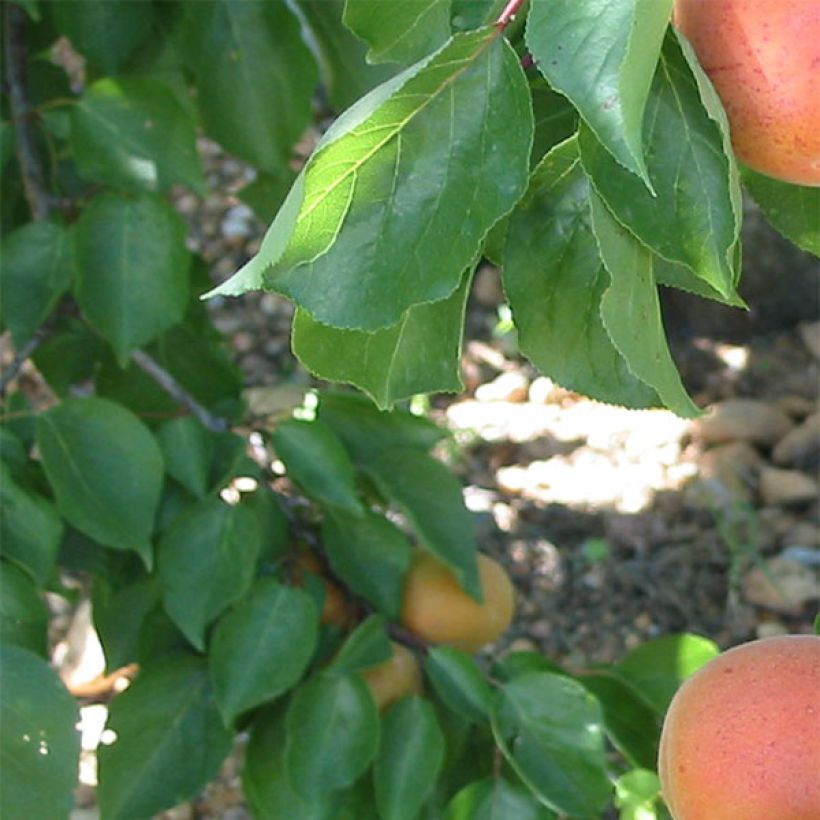

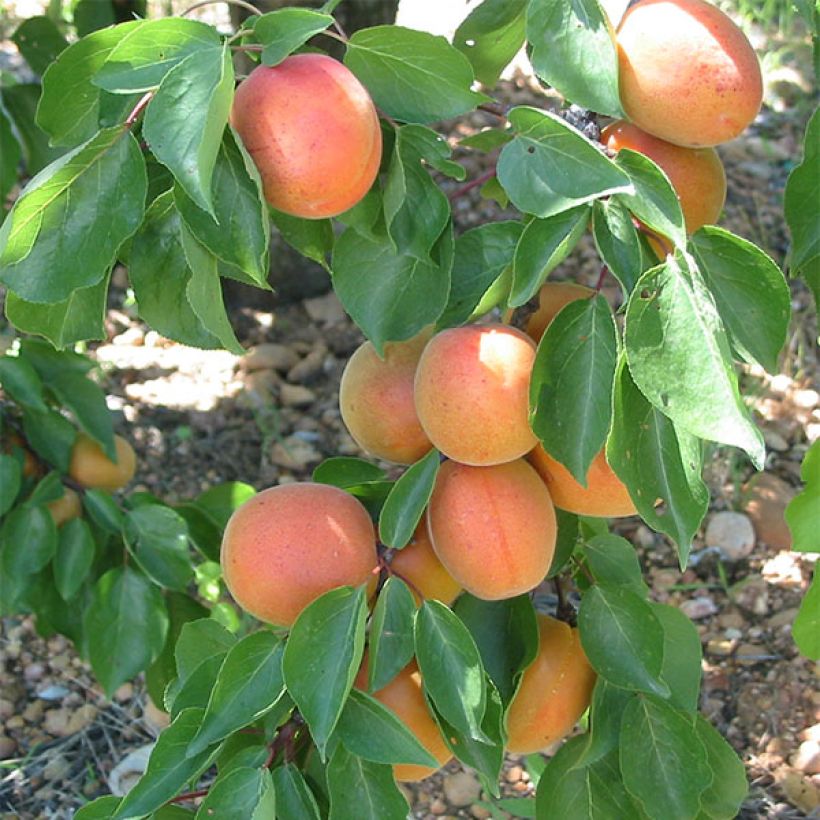

Plant habit
Fruit
Flowering
Foliage
Botanical data
Prunus
armeniaca
Flavor Cot®
Rosaceae
Apricot
Cultivar or hybrid
Other Apricot trees
Planting and care
Ideally, plant at the beginning of winter, when the tree is in vegetative rest. Plant before the frosts arrive. If you want to plant several apricot trees, space them at least 1.5m (5ft) apart. Dig a hole two to three weeks before planting. The hole should be twice as wide and deep as the pot. On the day, place the tree with its pot in a basin of water to moisten the entire root ball by capillarity. Place compost at the bottom of the hole. Place the tree in the hole and fill with a mixture of soil and potting soil. Firmly tamp down at the base. The root ball should be completely covered. Water thoroughly.
It is undemanding regarding the nature of the soil. It will thrive in rich, light, moist but well-drained soil. It does not tolerate stagnant water. Plant it in a sunny location, sheltered from North and East winds.
Planting period
Intended location
Care
-
, onOrder confirmed
Reply from on Promesse de fleurs
Mediterranean fruit trees
Haven't found what you were looking for?
Hardiness is the lowest winter temperature a plant can endure without suffering serious damage or even dying. However, hardiness is affected by location (a sheltered area, such as a patio), protection (winter cover) and soil type (hardiness is improved by well-drained soil).

Photo Sharing Terms & Conditions
In order to encourage gardeners to interact and share their experiences, Promesse de fleurs offers various media enabling content to be uploaded onto its Site - in particular via the ‘Photo sharing’ module.
The User agrees to refrain from:
- Posting any content that is illegal, prejudicial, insulting, racist, inciteful to hatred, revisionist, contrary to public decency, that infringes on privacy or on the privacy rights of third parties, in particular the publicity rights of persons and goods, intellectual property rights, or the right to privacy.
- Submitting content on behalf of a third party;
- Impersonate the identity of a third party and/or publish any personal information about a third party;
In general, the User undertakes to refrain from any unethical behaviour.
All Content (in particular text, comments, files, images, photos, videos, creative works, etc.), which may be subject to property or intellectual property rights, image or other private rights, shall remain the property of the User, subject to the limited rights granted by the terms of the licence granted by Promesse de fleurs as stated below. Users are at liberty to publish or not to publish such Content on the Site, notably via the ‘Photo Sharing’ facility, and accept that this Content shall be made public and freely accessible, notably on the Internet.
Users further acknowledge, undertake to have ,and guarantee that they hold all necessary rights and permissions to publish such material on the Site, in particular with regard to the legislation in force pertaining to any privacy, property, intellectual property, image, or contractual rights, or rights of any other nature. By publishing such Content on the Site, Users acknowledge accepting full liability as publishers of the Content within the meaning of the law, and grant Promesse de fleurs, free of charge, an inclusive, worldwide licence for the said Content for the entire duration of its publication, including all reproduction, representation, up/downloading, displaying, performing, transmission, and storage rights.
Users also grant permission for their name to be linked to the Content and accept that this link may not always be made available.
By engaging in posting material, Users consent to their Content becoming automatically accessible on the Internet, in particular on other sites and/or blogs and/or web pages of the Promesse de fleurs site, including in particular social pages and the Promesse de fleurs catalogue.
Users may secure the removal of entrusted content free of charge by issuing a simple request via our contact form.
The flowering period indicated on our website applies to countries and regions located in USDA zone 8 (France, the United Kingdom, Ireland, the Netherlands, etc.)
It will vary according to where you live:
- In zones 9 to 10 (Italy, Spain, Greece, etc.), flowering will occur about 2 to 4 weeks earlier.
- In zones 6 to 7 (Germany, Poland, Slovenia, and lower mountainous regions), flowering will be delayed by 2 to 3 weeks.
- In zone 5 (Central Europe, Scandinavia), blooming will be delayed by 3 to 5 weeks.
In temperate climates, pruning of spring-flowering shrubs (forsythia, spireas, etc.) should be done just after flowering.
Pruning of summer-flowering shrubs (Indian Lilac, Perovskia, etc.) can be done in winter or spring.
In cold regions as well as with frost-sensitive plants, avoid pruning too early when severe frosts may still occur.
The planting period indicated on our website applies to countries and regions located in USDA zone 8 (France, United Kingdom, Ireland, Netherlands).
It will vary according to where you live:
- In Mediterranean zones (Marseille, Madrid, Milan, etc.), autumn and winter are the best planting periods.
- In continental zones (Strasbourg, Munich, Vienna, etc.), delay planting by 2 to 3 weeks in spring and bring it forward by 2 to 4 weeks in autumn.
- In mountainous regions (the Alps, Pyrenees, Carpathians, etc.), it is best to plant in late spring (May-June) or late summer (August-September).
The harvesting period indicated on our website applies to countries and regions in USDA zone 8 (France, England, Ireland, the Netherlands).
In colder areas (Scandinavia, Poland, Austria...) fruit and vegetable harvests are likely to be delayed by 3-4 weeks.
In warmer areas (Italy, Spain, Greece, etc.), harvesting will probably take place earlier, depending on weather conditions.
The sowing periods indicated on our website apply to countries and regions within USDA Zone 8 (France, UK, Ireland, Netherlands).
In colder areas (Scandinavia, Poland, Austria...), delay any outdoor sowing by 3-4 weeks, or sow under glass.
In warmer climes (Italy, Spain, Greece, etc.), bring outdoor sowing forward by a few weeks.

































